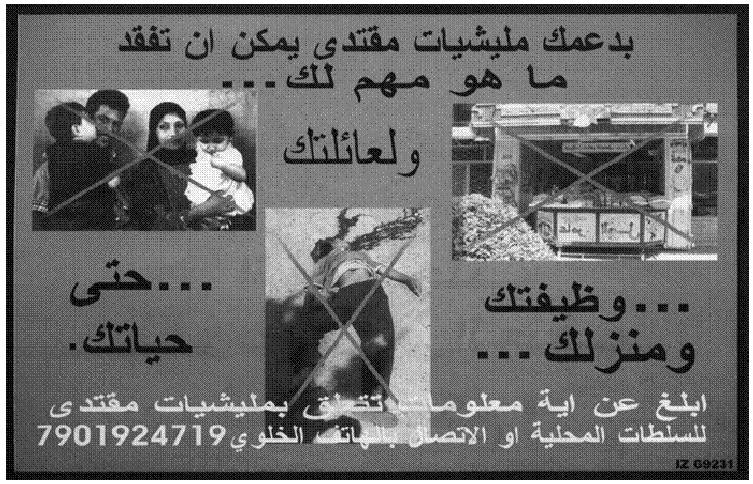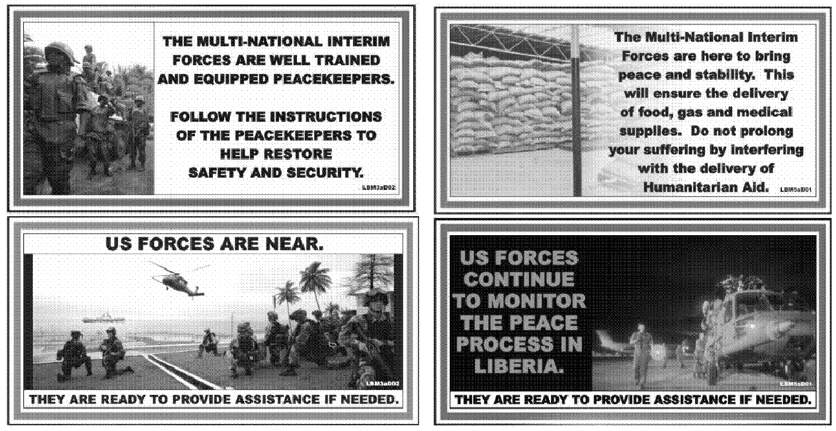Public Intelligence
Psychological operations (PSYOP) have long been used by militaries around the world to coerce populations into acting in a manner favorable to their mission objective. The product of these operations, which is commonly called propaganda when distributed by enemy forces, is a mixture of complex social research, art direction and psychological theory designed to manipulate its unsuspecting recipient into modifying their behavior in a way favorable to those conducting the PSYOP. The message conveyed through a PSYOP can often stray into deeply emotional and personal territory that is intended to trigger a profound psychological response. For example, U.S. and British troops fighting in Italy and France during World War II were subjected to a barrage of leaflets distributed by German forces describing the futility of their mission, encouraging them to take the “POW life insurance policy” and instructing them that their girlfriends back home were being taken advantage of by Jewish businessmen. The methodology behind these persuasive psychological tactics is described in detail in U.S. Army FM 3-05.301 Psychological Operations Process Tactics, Techniques, and Procedures, which provides fascinating insight into the methods used by PSYOP soldiers to modify the behavior of targeted populations.
FM 3-05.301 is described as the “principal reference for the PSYOP process” detailing “procedures and strategies derived from applied scientific and academic disciplines in an effort to improve the efficacy” of PSYOP. The manual includes everything from analyzing target audiences to tactical strategies for influencing populations. There are guides for production and dissemination of pamphlets, newspapers, magazines and video propaganda designed to influence target audiences and facilitate mission objectives. An appendix to the manual even includes complex instructions on the aerial dissemination of PSYOP leaflets, including tables for calculating the altitude and wind’s effect on the range of dispersal.
In order to influence populations more effectively, FM 3-05.301 provides PSYOP soldiers with helpful tips to produce effective and professional PSYOP packages. A section of the manual focuses entirely on aesthetic symmetry, formal balance and how to capitalize on sequential eye movements that “follow an established logical sequence of shapes, colors, and numbers or letters” in the layout of PSYOP publications. Detailed descriptions of the process for assessing target audiences (TA) and their susceptibility to specific arguments or sentiments are also included. A section titled “Psychographics” provides examples of psychological motivations to utilize in the production of PSYOP material:
- Fears: What does the TA fear?
- Hates: What does the TA hate?
- Anger: What angers the TA?
- Loves: What does the TA love?
- Shame or embarrassment: What does the TA consider shameful or embarrassing?
- What is the TA dissatisfied with? (What are its gripes?)
- What are the cultural norms? (How is the TA expected to act?)
- What does the TA value? (What is important to the TA?)
- What are the frustrations? (What does the TA want that it cannot get?)

An example of a PSYOP leaflet distributed in Iraq describing terrorists' indiscriminate use of force, including against children.
Once the TA of a PSYOP is determined, the manual describes methods for properly appealing to the interests of the audience by utilizing legitimacy, tradition, reverence and other emotional responses to coerce audience members. Nostalgia can be used to “encourage or discourage a particular behavior” by referring to the “good old days” encouraging the TA to “behave in a manner that will return to those times.” Self-interest can also be used to “play directly to the wants and desires of the individuals that make up a TA.” Or, a PSYOP may appeal to “the TA’s need to belong or conform to group standards” through either companionship or conformity utilizing “peer pressure.”
To further the emotional appeals of the argument presented in a PSYOP product, FM 3-05.301 recommends utilizing a variety of rhetorical tools so that PSYOP soldiers can “become familiar with, and ultimately develop, tactical and technical proficiency in the use of persuasion techniques.” For example, the use of “glittering generalities” or “intense, emotionally appealing words so closely associated with highly valued concepts and beliefs that the appeals are convincing without being supported by fact or reason. The appeals are directed toward such emotions as love of country and home, and desire for peace, freedom, glory, and honor.” Name-calling “seeks to arouse prejudices in an audience by labeling the object of the propaganda as something the TA fears, loathes, or finds undesirable.” Transference “projects positive or negative qualities of a person, entity, object, or value to another.” FM 3-05.301 also includes a list of “primary influence tactics”:
- Rewards and punishments: “If you do X, you will get Y,” or “if you do not do X, Y will happen to you.” Example: “Surrender, and you will be treated well; continue to fight, and you will be killed.”
- Expertise: “Speaking as an authority on the subject, I can tell you that rewards/punishments will occur if you do or do not do X.” Example: “Oil Minister Gregor (key communicator/expert) states that if rebel groups continue to sabotage oil pipelines, the national economy will be seriously affected.”
- Gifts: Giving something as a gift before requesting compliance. The idea is that the target will feel the need to reciprocate later. Example: “This well and cistern are a gift to the people of Birmingville from the coalition forces…demonstration of our good will and hope for mutual cooperation in the future.”
- Debt: Calling in past favors. Example: “Coalition forces have done a lot for Birmingville, Elder Chang: the new school, the well in the center of town… these insurgents are endangering all we have worked for together. We need your help in stopping these groups by reporting any information you and your people may discover.”
- Aversive stimulation: Continuous punishment, and the cessation of punishment, is contingent on compliance. Example: “We will continue to bomb your position unless you surrender immediately.”
- Moral appeal: Entails finding moral common ground, and then using the moral commitments of a person to obtain compliance. Example: “The killing of innocent civilians is wrong; please help the security forces stop this tragic loss of innocent life by reporting any information on terrorist activities.”
- Positive and negative self-feeling: “You will feel better/bad if you do X.” Example: “Become part of something bigger than yourself, know honor and take pride in your work…join the national security forces!”
- Positive and negative altercasting: “Good people do X / Bad people do Y.” Example: “Red Tribe members are brave and honorable people who care about the future of their country and are not intimidated by rebel groups. Call and report insurgent activity now on the coalition hotline.”
- Positive and negative esteem of others: “Other people will think highly/less of you if you do X.” Example: “Earn the respect of your friends and the pride of your family…join the Patriotsville National Guard now!”
- Fear: “Bad things will happen to you if you do X.” Example: “Only death and fire await those who continue to fight…surrender now.”
Each of these tactics is designed to further the intensity of the PSYOP argument and, thus, increase its chance of influencing its TA. Behavioral change in the TA is the ultimate goal off these activities, “challenging or emphasizing beliefs” and manipulating “existing consequences or introducing new ones” to affect the target and exploit vulnerabilities in their psychological makeup.

